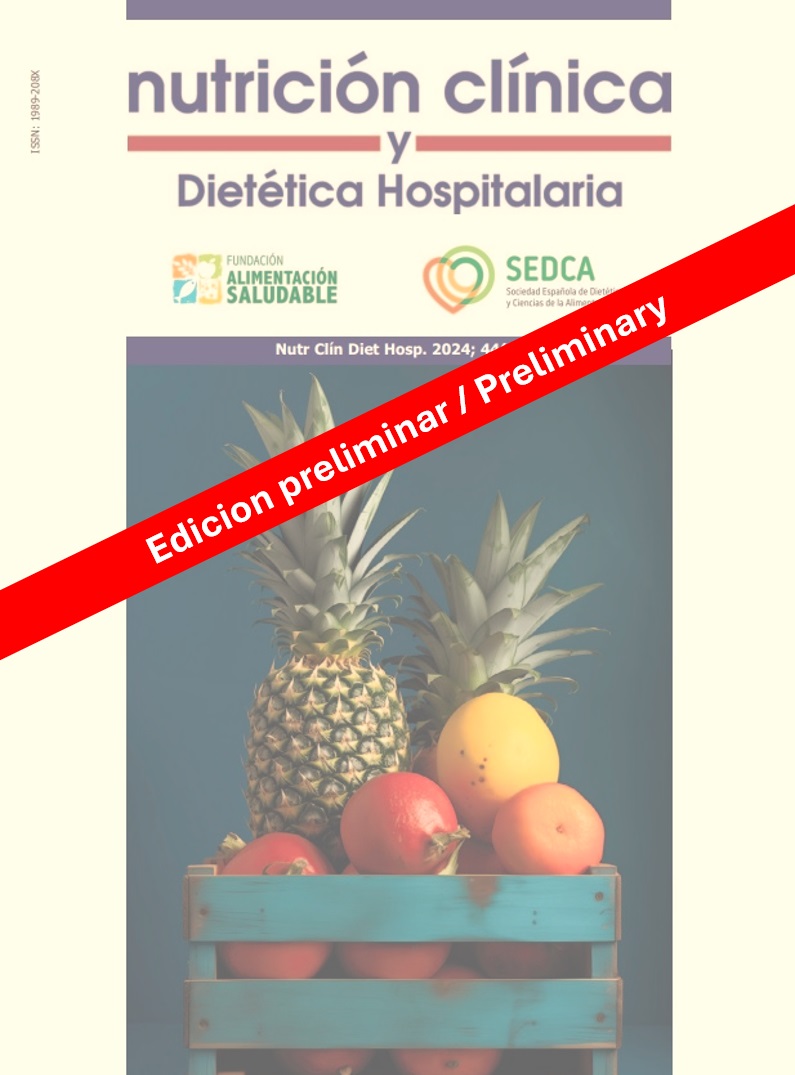Factores asociados a la diabetes mellitus tipo 2 de la población adulta peruana.
DOI:
https://doi.org/10.12873/451guerreroPalabras clave:
Diabetes mellitus tipo 2; Hipertensión arterial; Estilo de vidaResumen
Introducción: Las personas diagnosticadas con diabetes mellitus tipo 2 tienen más riesgo de mortalidad, a comparación de las personas que no la padecen, el principal motivo son las enfermedades cardiovasculares entre otros factores.
Objetivo: Determinar los factores asociados a la diabetes mellitus tipo 2 de los adultos peruanos de 18 a 59 años.
Material y métodos: La investigación fue transversal, descriptiva y relacional. La muestra fue de 1921 personas de 18 a 59 años. El estudio fue un análisis secundario de la base de datos de la Encuesta Nacional Demográfica y Salud Familiar del Perú del año 2022. Para el análisis estadístico se utilizó las pruebas de chi cuadrado y la prueba de fisher para determinar la asociación entre la diabetes mellitus tipo 2 con los factores de riesgo. Además, se realizó regresión logística binaria en el cual la variable dependiente diabetes mellitus tipo 2 (1=Si presenta,2=No presenta) y las variables independientes fueron edad, sexo, IMC, perímetro abdominal, consumo de frutas y verduras, hipertensión y estilos de vida. Se aplicó un nivel de significancia p<0,05.
Resultados: El 45,2% presentaron sobrepeso y el 29,4% obesidad, el 48% evidenciaron un perímetro abdominal con un riesgo muy alto de presentar alguna enfermedad cardiovascular. El 47,2% consume una vez a la semana ensalada de frutas y el 21,1% consumen 7 días a la semana ensalada de verduras. Las edades comprendidas de 18 a 29 años tienen menor riesgo de diabetes mellitus, que si se encuentran en edades de 30 a 59 años (p=0,002). Asimismo, a más hipertensión existe más probabilidad de padecer diabetes mellitus 2 (p=0,001).
Conclusiones: Los factores asociados a la diabetes mellitus tipo 2 fueron la edad y la hipertensión arterial.
Referencias
Organización Mundial de la Salud. Diabetes. 2024. https://www.who.int/es/news-room/fact-sheets/detail/diabetes
Pan American Health Organization. Panorama de la diabetes en la Región de las Américas. 2023. https://iris.paho.org/handle/10665.2/57197
Instituto Nacional de Estadística e Informática. Diabetes mellitus según sexo. 2022. chrome-extension://efaidnbmnnnibpcajpcglclefindmkaj/https://proyectos.inei.gob.pe/endes/2022/SALUD/ENFERMEDADES_ENDES_202según
Instituto Nacional de Estadística e Informática. Diabetes mellitus según grupos de edad. https://cdn.www.gob.pe/uploads/document/file/5110578/2.3%20Diabetes%20mellitus%20seg%C3%BAn%20grupos%20de%20edad.pdf?v=1694441528
Jerez C, Medina Y, Ortíz A, Gónzalez S, Aguirre M. Fisiopatología y alteraciones clínicas de la diabetes mellitus tipo 2: revisión de literatura | Nova. 22 de septiembre de 2022; Vol. 23 Núm. 43.https://doi.org/10.22490
Ministerio de Salud. Reporte Anual Programa Presupuestal 2023. https://www.minsa.gob.pe/presupuestales/doc2024/reporte-seguimiento/Reporte%202023-I_PP%200018.pdf
Álvarez Cabrera JA, Chamorro LI, Ruschel LF, Álvarez Cabrera JA, Chamorro LI, Ruschel LF. El test de FINDRISK como primera acción en atención primaria en salud para identificar el riesgo de desarrollo de diabetes mellitus tipo 2 en la población general. Rev Virtual Soc Paraguaya Med Interna. 2023;10(1):41-9. https://doi.org/10.18004/rvspmi/2312-3893/2023.10.01.41 .
Uyaguari-Matute GM, Mesa-Cano IC, Ramírez-Coronel AA, Martínez-Suárez PC, Uyaguari-Matute GM, Mesa-Cano IC, et al. Factores de riesgo para desarrollar diabetes mellitus II. Vive Rev Salud. abril de 2021;4(10):96-106. https://doi.org/10.33996/revistavive.v4i10.79
Instituto Nacional de Estadística e Informática. Perú Encuesta Demográfica y de Salud Familiar - ENDES 2022. Disponible en: https://proyectos.inei.gob.pe/endes/2022/SALUD/ENFERMEDADES_ENDES_2022.pdf
Bohórquez Moreno CE, Barreto Vasquez M, Muvdi Muvdi YP, Rodríguez Sanjuán A, Badillo Viloria MA, Martínez de la Rosa WÁ, et al. Factores modificables y riesgo de diabetes mellitus tipo 2 en adultos jóvenes: un estudio transversal. Cienc Enferm. 2020;26. http://dx.doi.org/10.29393/ce26-7fmcb70007.
Physical status: the use and interpretation of anthropometry. Report of a WHO Expert Committee. World Health Organ Tech Rep Ser. 1995;854:1-452.
Waist circumference and waist-hip ratio: report of a WHO expert consultation. 2008. https://www.who.int/publications/i/item/9789241501491
Lucero MT, Aquino AC, López TL, Milla YC, Aliaga DJ, Saintila J. Hábitos alimentarios, estado nutricional y perfil lipídico en un grupo de pacientes con diabetes tipo 2. Nutr Clínica Dietética Hosp. 2020;40(2):135-42. https://doi.org/10.12873/402saintila
Peralta HM, Costa Gil JE, Saleme AE, Peralta HM, Costa Gil JE, Saleme AE. Evaluación del puntaje FINDRISC para detección de prediabetes y diabetes tipo 2 sin diagnóstico. Med B Aires. 2024;84(1):1-10.
Instituto Nacional de Estadistica e Informatica. 2021. https://m.inei.gob.pe/prensa/noticias/el-378-de-la-poblacion-de-15-y-mas-anos-de-edad-tiene-sobrepeso-en-el-ano-2019-12229/
Rodríguez M, Mendoza MD. Factores de riesgo de diabetes mellitus tipo 2 en población adulta. Barranquilla, Colombia. Rev Colomb Endocrinol Diabetes Metab. 13 de junio de 2019;6(2):86-91.
Informe sobre la situación del alcohol y la salud en la Región de las Américas 2020. Pan American Health Organization; 2021. Disponible en: https://iris.paho.org/handle/10665.2/53579
United States Department of Health and Human Services. The health consequences of smoking—50 years of progress. A report of the Surgeon General. Atlanta, GA: United States Department of Health and Human Services, Centers for Disease Control and Prevention, National Center for Chronic Disease Prevention and Health Promotion, Office on Smoking and Health; 2014. https://www.ncbi.nlm.nih.gov/books/NBK179276/
Pinillos Patiño Y, Oviedo Argumedo E, Rebolledo Cobos RC, Herazo Beltrán Y, Valencia Fontalvo P, Guerrero Ospino M, et al. Estilo de vida en adultos jóvenes universitarios de Barranquilla, Colombia: Diferencias según sexo y estatus socioeconómico. Retos Nuevas Tend En Educ Física Deporte Recreación. 2022;(43):979-87.
Tumax K, León CL de. Relación entre índice cintura cadera, índice cintura talla y la Escala de FINDRISC en adultos de Guatemala. Rev Científica. 2024 ;32(1). https://doi.org/10.54495/Rev.Cientifica.v32i1.353
Palomino EEB. Prevalencia de factores de riesgo para enfermedades crónicas no transmisibles en Perú. Rev Cuid. agosto de 2020;11(2). https://doi.org/10.15649/cuidarte.1066.
Varela-Vega Y, Roy-García IA, Pérez-Rodríguez M, Velázquez-López L. Certeza diagnóstica del instrumento FINDRISC para identificar resistencia a la insulina en adultos. Rev Médica Inst Mex Seguro Soc. 2023;61(1):33-41.
Descargas
Publicado
Número
Sección
Categorías
Licencia
Derechos de autor 2025 Nutrición Clínica y Dietética Hospitalaria

Esta obra está bajo una licencia internacional Creative Commons Atribución-NoComercial-SinDerivadas 4.0.
Los lectores pueden utilizar los textos publicados de acuerdo con la definición BOAI (Budapest Open Access Initiative)



